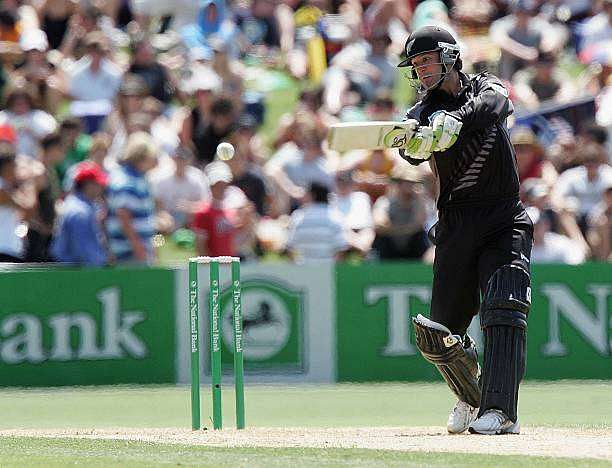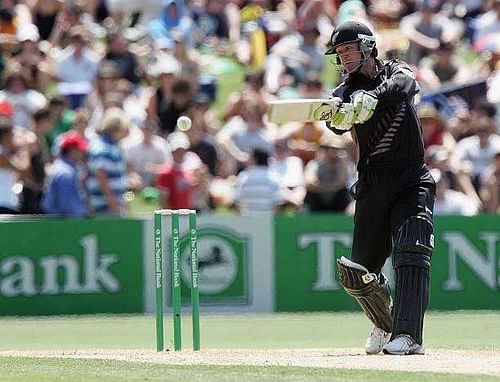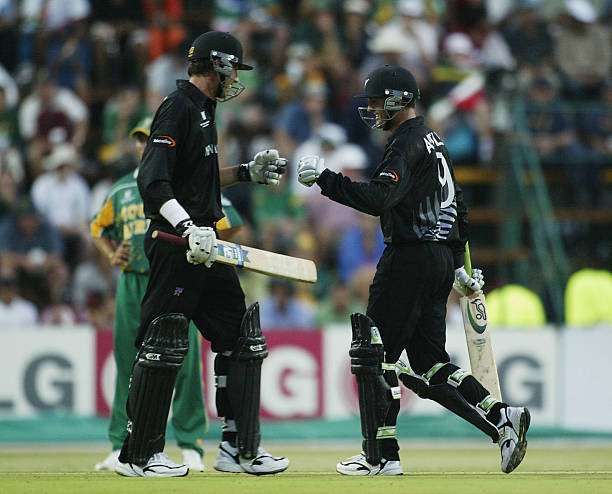
SKipper: Nathan Astle - A legend who wasn't a leader
Nathan Astle ended his career as an all-rounder for New Zealand with almost twelve thousand runs across Tests and ODIs. He scored 27 centuries and also took 150 wickets with his occasional medium pace bowling. He is number two on the list of Kiwi batsmen with the most runs scored in ODIs for their country.
But the one statistic that perhaps personifies Astle’s career more than any other is this: he is second only to Sachin Tendulkar in the number of times he got out in the nervous nineties in one-day matches.
In spite of being an extremely strong performer in the New Zealand team, he was never in the running to be its captain. Like any batsman who gives away his wicket right at the threshold of three figures, he was almost there. Almost, but not quite.
An explosive batsman
Astle made his ODI debut for New Zealand during the West Indies tour in 1995. With a top score of 25 in the series, it wasn’t the most prolific start to his career but his batting revealed its promise later that year when Astle hit his first century in Nagpur during the Indian tour.
From that moment on, there was no looking back for the Christchurch lad. He established himself as a swashbuckling top order batsman who could destroy any bowling attack.
Following on from his compatriot Mark Greatbatch’s experiment in the 1992 World Cup, he took many an opening bowler to the cleaners, taking advantage of the fielding restrictions at the start of an innings.
Players are usually expected to be more sedate in the Test format. However, Astle’s batting remained free-flowing in the longer format of the game as well. His double century against England in 2002 remains a masterclass.
Astle scored the fastest double century in Test cricket against England in 2002
On a green-top wicket with 550 runs to chase down for victory, Astle walked to the crease when his side had lost three wickets for 100 odd runs. Never looking remotely uncomfortable against the English attack, he began steadily and reached his century in 114 balls.
It was already a good innings until then but the next hour elevated it into cricket folklore.
Astle took just 39 balls to score the next hundred runs and put his name in the record books. In just 153 balls, he scored the fastest double century ever. The English bowling, comprising of Andrew Caddick and Freddie Flintoff, was hardly incompetent.
Their pace was always threatening but Astle smashed them around as if they were bowling in slow motion.
This was years before T20 cricket came into being, years before batsmen began to believe boundaries were a birthright in every format of the game. Astle was perhaps a player ahead of his time. In spite of his memorable batting, New Zealand couldn’t complete the chase and lost the match.
Astle had almost pulled them to a glorious victory. Almost, but not quite.
A batting script for future players
Through the first few years of the 21st century, Nathan Astle was one of the key players of the New Zealand team. He led from the front with his batting and his contributions on the field were key as well. He gained a reputation of being a partnership breaker with his medium pace bowling and was a handy catcher in the slips.
In spite of being a regular performer, he was never considered for captaincy of the national side. He did not show any inclination to take up the extra responsibility and was generally considered too laid-back to be in contention for the leadership role.
Astle’s legacy, therefore, was in simply being an able soldier who his captain, Stephen Fleming, could always count upon. He was a dependable player and he single-handedly took his team to many victories.
More importantly, he sowed the seeds of destructive batting in the New Zealand fraternity in all forms of cricket. Players like Brendon McCullum in the current team are essentially following the script Astle wrote a few years ago. They treat bowlers with the same sense of contempt that could be seen in his stroke play.
If you asked a cricket fan to name the batting greats of the New Zealand cricket team, Astle’s name would probably be among the ones mentioned. But his memories do not evoke the same feelings of nostalgia, awe and respect as other legends like Martin Crowe or Richard Hadlee.
Contemporaries such as Stephen Fleming and Chris Cairns would rate higher in most lists.
It is a reality in sports that a player’s legacy is intrinsically tied to his leadership prowess. It is said that some men are born leaders while others have leadership thrust upon them. One can only speculate whether Astle would have been up to the challenge if he had been on the receiving end of that thrust.
But as it stands, history will know Nathan Astle as one of the tall pillars of the New Zealand batting legacy. His contributions will be long remembered but he perhaps won’t find his name on the very top echelon of the game. Almost, but not quite.

